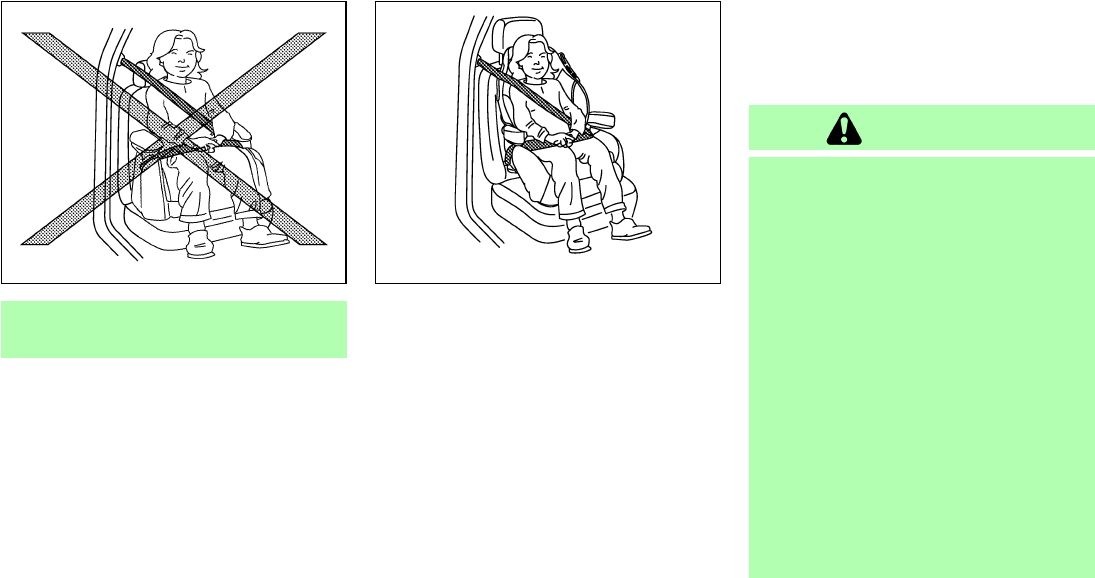
to provide the maximum protection dur-
ing a collision.
Booster seats of various sizes are offered by
several manufacturers. When selecting any
booster seat, keep the following points in mind:
¼ Choose only a booster seat with a label
certifying that it complies with Federal Motor
Vehicle Safety Standard 213 or Canadian
Motor Vehicle Safety Standard 213.
¼ Check the booster seat in your vehicle to be
sure it is compatible with the vehicle’s seat
and seat belt system.
¼ Make sure the child’s head will be properly
supported by the booster seat or vehicle
seat. The seatback must be at or above the
center of the child’s ears. For example, if a
low back booster seat
k
1
is chosen, the
vehicle seatback must be at or above the
center of the child’s ears. If the seatback is
lower than the center of the child’s ears, a
high back booster seat
k
2
should be used.
¼ If the booster seat is compatible with your
vehicle, place your child in the booster seat
and check the various adjustments to be sure
the booster seat is compatible with your
child. Always follow all recommended proce-
dures.
All U.S. states and Canadian provinces or
territories require that infants and small
children be restrained in an approved child
restraint at all times while the vehicle is
being operated.
WARNING
¼ Improper use of a booster seat can
increase the risk or severity of injury
for both the child and other occu-
pants of the vehicle.
¼ Follow all of the booster seat manu-
facturer’s instructions for installation
and use. When purchasing a booster
seat, be sure to select one which will
fit your child and vehicle. It may not
be possible to properly install some
types of booster seats in your ve-
hicle.
¼ If the booster seat and seat belt are
not used properly, the risk of a child
being injured in a collision or a sud-
den stop greatly increases.
¼ Adjustable seatbacks should be po-
sitioned to fit the booster seat, but as
SSS0363 LRS0454
1-26 Safety — Seats, seat belts and supplemental restraint system
੬ 06.7.20/Z33-D/V5.0 ੭


















